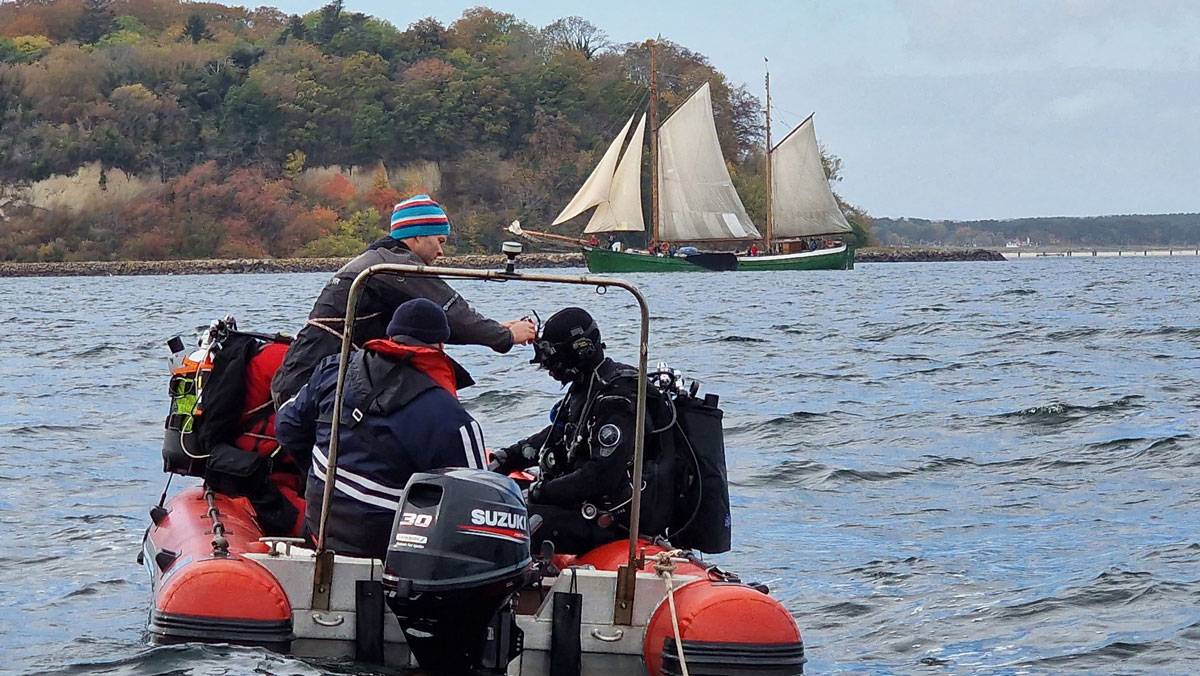Diver tracking, navigation, and communication currently in launch phase by EvoLogics, S2C underwater technology provides the data backbone
Digital underwater communication with EvoLogics technology allows to track diver positions and simultaneously exchange data with diver trackers. It provides divers with their positions, locations of their team members, mission waypoints, and text messages.
Diver tracking systems significantly contribute to diver safety. Real-time monitoring allows surface support teams to keep track of divers' locations and movements throughout their underwater excursions. In emergencies, such as equipment failure, health issues, or entanglement, immediate assistance can be provided as support teams are alerted promptly, potentially preventing life-threatening situations.
Coordination of complex underwater missions with multiple team members, such as search-and-rescue missions, becomes significantly easier and more efficient. With added two-way communication between divers, and between divers and the dive supervision team at the surface, diver tracking facilitates task coordination and exchange of critical information, enhancing the efficiency of diver operations.
For their diver tracking system, EvoLogics implement the ultra-compact battery-powered 18/34 T-series "tiny" acoustic modem. The small modem body is mounted next to the tank; the acoustic transducer sits in a comfortable position on the diver's back, ensuring unobstructed acoustic signals. The whole system is lightweight and outfitted with mounting brackets for easy attachment to the diving tank with cam bands. Connecting the system to the scuba equipment is straightforward and requires only minimal adjustments.

With a range of up to 1.5 km, 50 m max. operating depth, at the acoustic frequency of 18-34 kHz the system provides georeferenced positioning for up to 8 hours of battery life. The acoustic node for the operation is a USBL-capable surface buoy.
EvoLogics' USBL buoy is a fully integrated device and an all-in-one solution for ultra-short baseline (USBL) positioning of underwater targets. Position fixes are obtained from ranges and angles measured by the USBL antenna.
The device is a mono-unit with a USBL transceiver, integrated PC, dual-antenna GNSS receiver, and WiFi access point. It is designed for mobile scenarios, with a speedy setup and recovery. Its design philosophy is centered on "drop and play" deployment and hassle-free operation. Unpacking and assembly take only a few minutes, and before launching the buoy, one must simply turn it on and raise the GNSS antennas.
Besides locating positions of underwater targets, EvoLogics USBL technology allows for simultaneous data transfers and acts as a surface relay node for underwater monitoring networks. The buoy's ease of use makes it very practical for most various applications, and it has become a go-to device for field testing subsea robots and for ongoing work on research and product development projects. The buoy now fully supports diver tracking.
SiNAPS, EvoLogics' proprietary mission control and positioning software, runs directly on the diver modem. The diver console, a compact wrist tablet, connects to the modem by cable. It provides the diver access to the web-based SiNAPS user interface, visualizing the map of the current operations area, the positions of all divers and the support vessel, and running the text chat tool.
The USBL buoy uses acoustic signals to calculate diver positions and display them on the support vessel's SiNAPS. The surface team can track divers, monitor their positions, send them messages, and define/change mission waypoints. Acoustic links to divers are bidirectional, so tracker positions are available to all divers.
Much like texting on a smartphone, SiNAPS allows a team of divers to exchange short messages with each other and the surface, and track each other's positions in real time. Map waypoints can be added before or even during the mission to coordinate operations, and mark discovered objects or infrastructure for further investigation.
The diver tracking and navigation system is currently in the final testing stage together with selected professional dive teams worldwide.